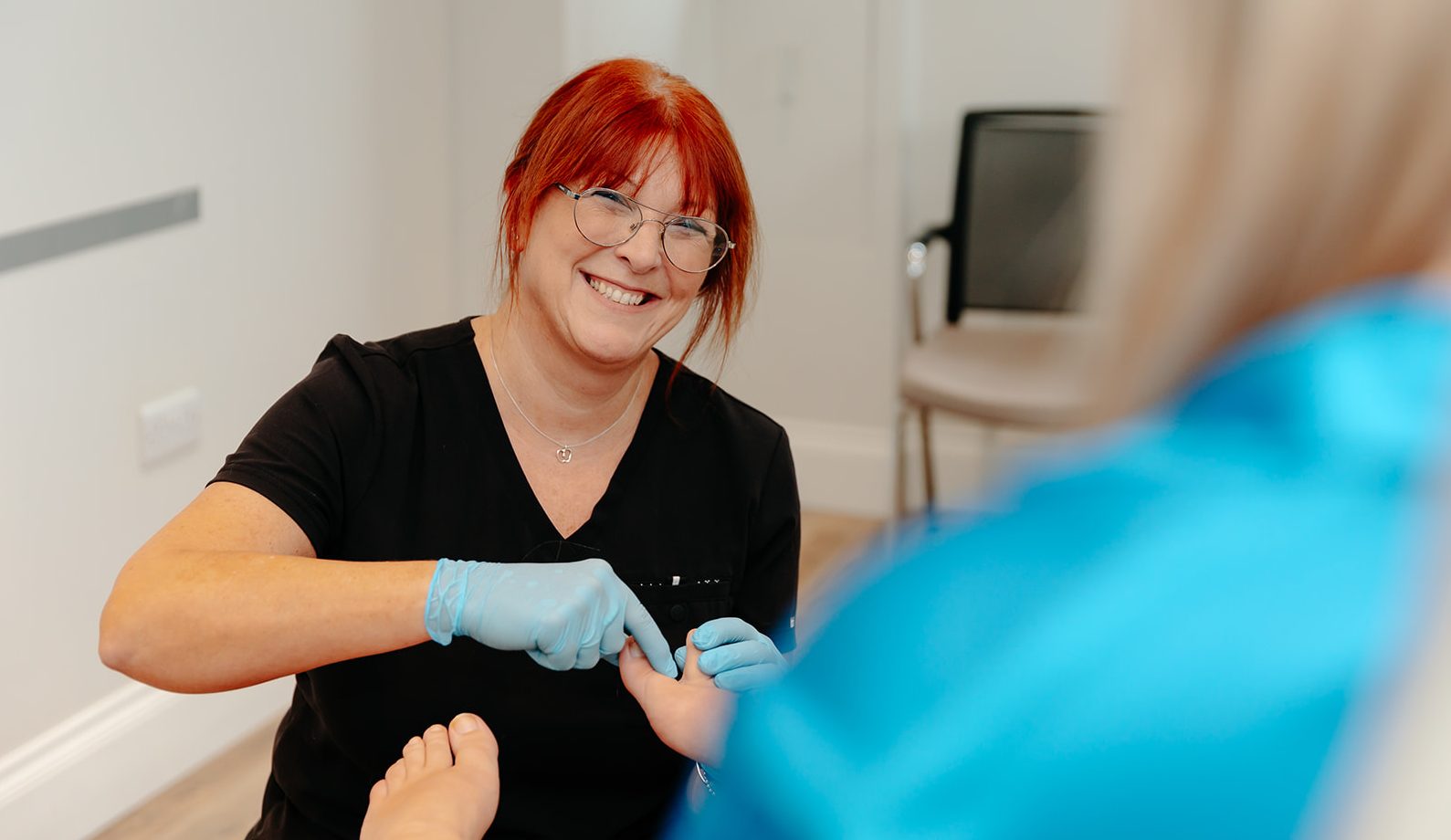Steph Hatt
October 13, 2019
November 21, 2024

Toenails are an incredibly important part of foot health, and sometimes they can become problematic due to damage, injury, or infection. If you’re experiencing pain, discomfort, or other issues with your toenails, you may wonder how a podiatrist can help.
A podiatrist’s role is in diagnosing and treating conditions related to the feet and ankles. They are well-equipped to address toenail problems, including those that may require toenail removal. In this blog, we’ll look at some reasons you may need to have nail surgery and how the process works.
Nail surgery is the process where part or whole of your toenail is removed to ease pain or to prevent a recurring issue. Podiatrists/Chiropodists can carry out three main types of nail surgery, including:
Sometimes, toenails can be the cause of pain and discomfort in your feet. If this is a reoccurring problem, the best solution may be to have the toenail removed to allow your foot to heal properly.
There are some common reasons why you might need a toenail removed, such as:
This is one of the most common reasons for toenail removal. An ingrown toenail occurs when the edge of the nail grows into the surrounding skin, causing pain, redness, swelling, and sometimes discharge or bleeding around the nail. If early treatment fails to ease these symptoms, a podiatrist may recommend removing part or all of the nail. This way, the nail can grow back correctly and prevent future issues.
If you suffer from pain or swelling in your toe that does not improve with initial treatment, the nail may need to be removed. In doing so, it can help alleviate the persistent discomfort and allow the surrounding tissue in the nail bed to heal. In some cases, a podiatrist may only need to remove a small part of the nail if it is the root cause of the pain.
If a toenail is infected, it can lead to severe pain and discomfort. An infection may occur as a result of trauma, fungal infections, or poor foot hygiene. In cases where the infection does not respond to treatments like antibiotics, a podiatrist might suggest removing the nail to allow for proper healing and to reduce the risk of further complications.
Trauma to the toenail, such as from an injury or repeated pressure (like from ill-fitting shoes), can cause significant pain and may damage the nail. If the toenail is severely bruised, or broken or if there’s a risk of developing an infection, it may be best to cut part of it away or remove the entire nail.
The procedure for removing a toenail typically follows a standard process to ensure patient comfort and safety.
Before the surgery, your podiatrist will conduct a thorough examination of your foot and discuss your symptoms. They will also want to know more about how the issue developed and if you have any other nail conditions.
Your Podiatrist/Chiropodist will look at whether your toe can be treated non-surgically. If it can be treated non-surgically then may trim part of the nail, however, if it’s not possible, or you have a recurring case then a minor surgical procedure may be required.
If surgery is required, the process will usually involve:
The removal process usually takes under an hour (per toe). You should be able to go home shortly after, although you will need someone to drive you home due to the local anaesthetic used.
Everyone’s nail condition is different, your recovery time will likely depend on the specific reason for the toenail removal, and how well you follow post-operative care instructions. Generally, recovery can take between 4-6 weeks, if part of the nail is removed, or 10 -12 weeks if the whole nail is removed.
In most cases, you’ll be able to return to normal activities within a few days after the removal, though you should avoid any activities that could put stress on the toe until it has fully healed. You’ll still be able to walk and move around as normal, though sports and high-impact activities should be avoided during your initial recovery to prevent complications.
It’s essential to follow your podiatrist’s aftercare advice closely. This may include keeping the foot dry, reapply dressings as instructed, and monitoring for any signs of infection such as increased redness, swelling, or discharge. Anti-inflammatories may be recommended to help manage any discomfort or pain you may feel.
Under most circumstances, toenail surgery is a very safe procedure, as with any surgical procedure there are risks, however small they may be. Some risks may include:
How to book nail surgery
At Hatt’s our team of experienced podiatrists can assess your condition and determine if surgery is necessary. We offer appointments across our clinics in Devizes, Marlborough, and Frome to help you get the care you need. Appointments are available to book online with no waiting lists so you get the treatment you require, as soon as possible, without disruptions.
During your initial consultation, we will discuss your symptoms and any concerns you might have regarding the procedure. Our podiatrists will then perform a thorough examination of your foot and discuss the potential treatment options available. If surgery is deemed necessary, they will explain the procedure in detail, including what you can expect before, during, and after the surgery.
To Book An Initial Podiatry Consultation, please call our Patient Services team on 01380 730473, or book online. Book today and get £20 off your first appointment.